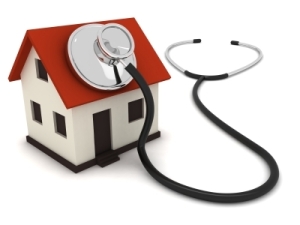Analysts See Big Growth in Devices That Make Home Treatments Easier
by
Brendon Nafziger, DOTmed News Associate Editor | November 04, 2009

Home health care:
more than a cottage industry
Thanks to the boom in home care, the market for parenteral drug delivery devices could grow significantly by 2012, according to analysts.
A report by the biotech consultancy group Scientia Advisors suggests that sales from these devices could reach almost $17 billion in the next three years, up from about $12 billion in 2007.
Parenteral drug delivery devices introduce drugs into the body outside the digestive tract, and include syringes, insulin pens and infusion pumps.
According to Scientia, based in Cambridge, MA, about 98 percent of biologics, such as insulin and some cancer and arthritis drugs, are delivered parenterally, as they cannot be taken by mouth since digestive juices render them useless.
Scientia expects to see some growth in the professional market, partly from the popularity of pre-filled syringes for flu vaccine and other therapies. "Everybody's getting pre-filled syringes," Harry Glorikian, a managing partner at Scientia, tells DOTmed News. "It's easier to deliver." This means that busy and understaffed nurses can delegate injections to their assistants.
Nonetheless, Scientia predicts the home market will drive new sales.
The reason? Doctors and patients alike are eager for products that will improve one of the most notoriously difficult aspects of home care: compliance. As Glorikian puts it, "Compliance is a problem. Period."
The transmucosal revolution?
To make it easier and more convenient for patients to follow often lifelong and laborious drug regimens at home, such as with diabetes, companies are exploring pain-free, needle-less delivery platforms.
Glorikian feels especially hopeful about transmucosal systems, which he calls a "game-changing situation."
These systems deliver drugs into the body through gels absorbed by the mucous membranes, such as the nose, which are more permeable than the skin. "We feel more bullish on transmucosal delivery," Glorikian says.
Scientia predicts that the market for Calcitonin, a nasally-delivered osteoporosis drug, which has been in pharmacies since 2004, will grow dramatically over the next five years. And Glorikian says there are scores of drugs in the pipeline for this modality, including anti-allergy drugs and one by Cytran for hepatitis C.
Needle-free
While some companies look to deliver drugs up the nose, others are finding ways to create needles so tiny or sharp they bypass pain detectors.
One company, Omnipod, has recently introduced a tiny, wearable, tubeless insulin-delivery pump that uses similar technology for basically pain-free injections, Glorikian says.
Home monitoring
Easy-to-use and painless delivery systems are only one side of the movement to ensure patient compliance. The other is remote monitoring.
Glorikian sees a future with an "artificial hypothalamus," a telemedicine system that analyzes the patient's health and ensures they get dose delivery exactly when their bodies need it.
"Remote patient monitoring is becoming a reality," he says. "The next-gen could be: you'd prick your finger; data uploads into the system, and you get a call from your doctor saying change your medication level. At the next level, it's all hooked up to you and fully automated," he says.
